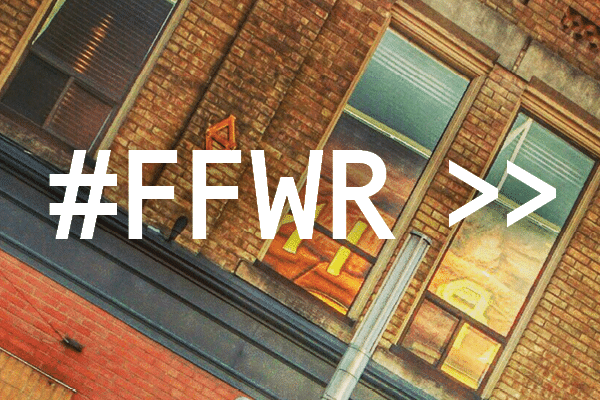Between September 16 and October 4, 2015, a group of local artists from across Waterloo Region, who call themselves Collective Identity, have taken over THEMUSEUM’s fourth floor gallery space. During this time, they are showcasing an exhibition called Fast Forward Waterloo Region. Previously: #FFWR: What do you see in 50 years?
While many of the pieces of artwork are displayed in a traditional sense – mounted on the walls, to be observed and thought about, but not touched – there are interactive installations as well. These pieces show that art can transcend traditional boundaries, and encapsulate more than just a single ideal.
Nicole Battista’s Stone Soup installation, for example, will come to live on Wednesday, September 30 at 6:30pm to tell a story regarding food insecurity throughout Waterloo Region. While there are images and items on display throughout the day, the interactive components give more meaning to her piece, and show visitors that art can be multi-dimensional.
Terre Chartrand, the Artistic Director and Co-Curator of Fast Forward Waterloo Region, has dedicated an entire wall within the exhibition to showcase the interactivity of art. The wall is covered in a chalkboard, which features a question regarding the exhibition. Here, visitors can share their thoughts and opinions about the artwork on display, and write down their own insights.
This week’s question is: Waterloo Region, what does art mean to you? Below are some of the thoughts and ideas shared by visitors so far:
- “A way to express your feelings”
- “One love”
- “More inclusion”
- “Something that evokes emotion and changes me”
- “Not math”
- “Reflection of the soul of a society”
THEMUSEUM’s Marketing and Communications Coordinator, Lizz DiCesare, also shared some thoughts about what art means to her:
“Art can be anything; it can be an illustration, a painting, written or spoken word, music, a performance, or dance. Pieces of art range from the Van Gogh’s paintings in museums, to a child’s drawing pinned up with pride on a fridge. Art evokes emotions, whether they are happy or sad, disturbing or exciting. Art makes you feel, and art makes you think. Pieces of art can make you question not only the artist’s interpretation or message, but also your own feelings. Why does a certain painting make you hopeful? Why can a performance move you to tears? Art can predict the future, and art can showcase the past.”

